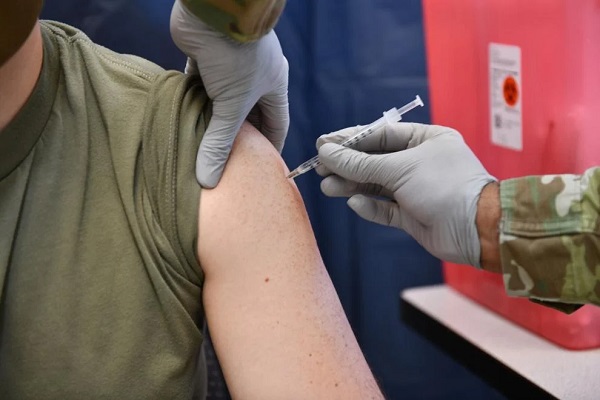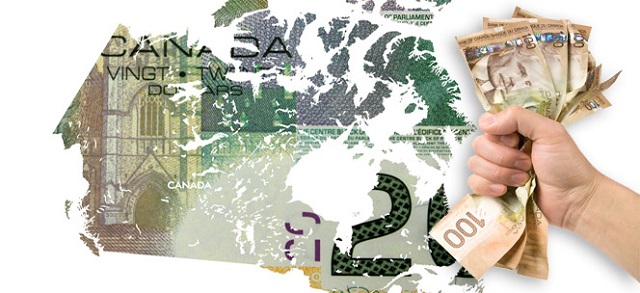Business
Trudeau’s four-day trip to Europe racks up $71,000 food bill
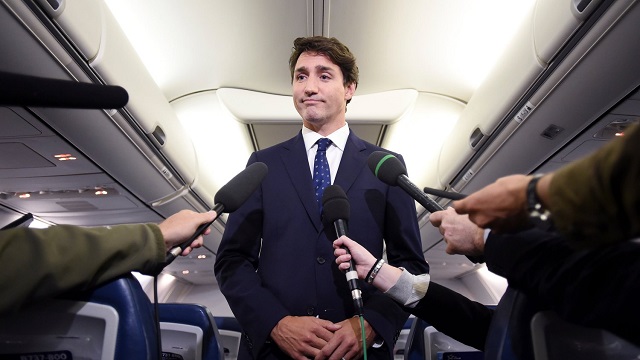
From the Canadian Taxpayers Federation
By Ryan Thorpe
“It would have been cheaper for each member of the prime minister’s delegation to go to the Keg, order a prime rib steak, a Caesar salad, baked garlic shrimp and a bottle of pinot noir for every meal.”
Break out the DVD player and aerate a few bottles of the 2015 Riesling, because Prime Minister Justin Trudeau has an important work trip.
The food bill for Trudeau’s four-day trip to Italy and Switzerland this June cost more than $71,000, including at least $43,000 spent on airplane food alone, according to the records.
That works out to an average meal cost of $145. Add it up and the total food bill averaged more than $1,700 per member of the Canadian delegation.
To put that in context: the average Canadian family of four spends about $1,400 on food per month, according to Canada’s Food Price Report.
“The per person food bill for Trudeau and his entourage on this trip was more than the average Canadian family spends on groceries in a month,” said Franco Terrazzano, CTF Federal Director. “It would have been cheaper for each member of the prime minister’s delegation to go to the Keg, order a prime rib steak, a Caesar salad, baked garlic shrimp and a bottle of pinot noir for every meal.”
The total taxpayer tab for the four-day trip came to nearly $1 million, according to access-to-information records obtained by the Canadian Taxpayers Federation from the Department of National Defence and the Privy Council Office.
The cost of the trip could be even higher, as “some accommodations were covered by Global Affairs Canada,” according to the records.
Trudeau travelled to Apulia, Italy, and Lucerne, Switzerland, between June 13 and 16, 2024, to attend a G7 Summit and a Summit on Peace in Ukraine.
All told, the trip cost Canadian taxpayers at least $918,000, according to the records.
Prior to take-off, government bureaucrats purchased $812 worth of junk food from a grocery store – including Red Bull, pop (Pepsi, Coke, Sprite), chocolate bars (Kit Kats, Twix’s, Reece’s Pieces) and candy (Swedish Berries, Fuzzy Peaches).
Government bureaucrats also swung by a record store and purchased $102 worth of DVDs for the flight, according to the records.
The purchases included the first season of Wednesday, a supernatural coming-of-age TV show based on the Addams Family, Madame Web, a superhero film, the sci-fi thriller Chronicle, and Witness, a 1995 crime movie starring Harrison Ford.
During the flights, the passengers were served meals that would be at home on the menu of a fine dining restaurant, alongside four types of wine – a 2021 Chardonnay, a 2015 Riesling, a 2018 Baco Noir and a 2021 Merlot.
Meals included veal piccata Milanese with potato, buttered green peas and broccoli, and lamb ribs with whole grain mustard sauce, rice pilaf and sauteed spinach.
Other dinner options included cheese ravioli with rose sauce, roasted red peppers and parmesan cheese, grilled chicken with lemon caper sauce, mashed potatoes and glazed carrots, and beef stroganoff with buttered noodles and snow peas.
For dessert, passengers chose between raspberry cheesecake coulis, chocolate and pistachio cake and Swiss chocolate cake.
“I like Sydney Sweeney as much as the next guy, but maybe Trudeau could do some actual work or download a movie on Netflix the next time he flies, instead of billing taxpayers for a DVD copy of Madame Web,” Terrazzano said. “While he’s at it, maybe Trudeau could forgo the Swiss chocolate cake while Canadians back home are lining up at food banks in record numbers.”
Trudeau travelled with an entourage ranging from 36 to 41 people during the four-day trip, including two coordinators of digital and creative content, a videographer, and a photographer, according to the records.
This is far from the first time a short trip for Trudeau meant a big bill for taxpayers.
Trudeau’s six-day trip to the Indo-Pacific region in September 2023 included more than $223,000 spent on airplane food, according to records obtained by the CTF.
That entire trip came with a taxpayer tab of nearly $2 million.
In 2022, Stewart Wheeler, who was Canada’s chief of protocol at the time, told a Parliamentary committee the government would bring down the cost of international travel.
“We recognize that the system that we had in place was not delivering the kind of oversight and control that Canadian taxpayers deserve,” Wheeler said.
Wheeler’s comments came after Governor General Mary Simon spent $100,000 on inflight catering during a nine-day trip to the Middle East in March 2022.
“The government promised to bring the cost of international travel down, but taxpayers are still getting stuck with outrageous bills,” Terrazzano said. “The government needs to figure out how to fly overseas without spending more on food in a few days than four families spend on groceries in an entire year.”
2025 Federal Election
MEI-Ipsos poll: 56 per cent of Canadians support increasing access to non-governmental healthcare providers

-
Most believe private providers can deliver services faster than government-run hospitals
-
77 per cent of Canadians say their provincial healthcare system is too bureaucratic
Canadians are increasingly in favour of breaking the government monopoly over health care by opening the door to independent providers and cross-border treatments, an MEI-Ipsos poll has revealed.
“Canadians from coast to coast are signalling they want to see more involvement from independent health providers in our health system,” explains Emmanuelle B. Faubert, economist at the MEI. “They understand that universal access doesn’t mean government-run, and that consistent failures to deliver timely care in government hospitals are a feature of the current system.”
Support for independent health care is on the rise, with 56 per cent of respondents in favour of allowing patients to access services provided by independent health entrepreneurs. Only 25 per cent oppose this.
In Quebec, support is especially strong, with 68 per cent endorsing this change.
Favourable views of accessing care through a mixed system are widespread, with three quarters of respondents stating that private entrepreneurs can deliver healthcare services faster than hospitals managed by the government. This is up four percentage points from last year.
Countries like Sweden and France combine universal coverage with independent providers and deliver faster, more accessible care. When informed about how these health systems run, nearly two in three Canadians favour adopting such models.
The poll also finds that 73 per cent of Canadians support allowing patients to receive treatment abroad with provincial coverage, which could help reduce long wait times at home.
Common in the European Union, this “cross-border directive” enabled 450,000 patients to access elective surgeries in 2022, with costs reimbursed as if they had been treated in their home country.
There’s a growing consensus that provincial healthcare systems are overly bureaucratic, with the strongest agreement in Alberta, B.C., and Quebec. The proportion of Canadians holding this view has risen by 16 percentage points since 2020.
Nor do Canadians see more spending as being a solution: over half say the current pace of healthcare spending in their province is unsustainable.
“Governments shouldn’t keep doubling down on what isn’t working. Instead, they should look at what works abroad,” says Ms. Faubert. “Canadians have made it clear they want to shift gears; now it’s up to policymakers to show they’re listening.”
A sample of 1,164 Canadians aged 18 and older was polled between March 24th and March 28th, 2025. The margin of error is ±3.3 percentage points, 19 times out of 20.
The results of the MEI-Ipsos poll are available here.
* * *
The MEI is an independent public policy think tank with offices in Montreal, Ottawa, and Calgary. Through its publications, media appearances, and advisory services to policymakers, the MEI stimulates public policy debate and reforms based on sound economics and entrepreneurship.
2025 Federal Election
POLL: Canadians say industrial carbon tax makes life more expensive
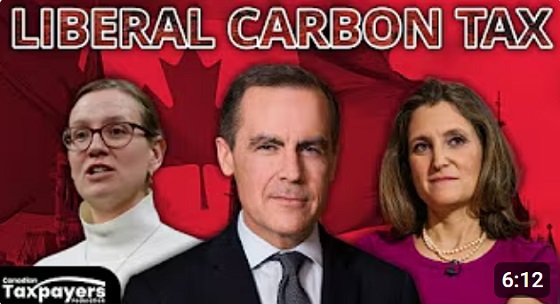
The Canadian Taxpayers Federation released Leger polling showing 70 per cent of Canadians believe businesses pass on most or some of the cost of the industrial carbon tax to consumers. Meanwhile, just nine per cent believe businesses pay most of the cost.
“The poll shows Canadians understand that a carbon tax on business is a carbon tax on Canadians that makes life more expensive,” said Franco Terrazzano, CTF Federal Director. “Only nine per cent of Canadians believe Liberal Leader Mark Carney’s claim that businesses will pay most of the cost of his carbon tax.
“Canadians have a simple question for Carney: How much will your carbon tax cost?”
The federal government currently imposes an industrial carbon tax on oil and gas, steel and fertilizer businesses, among others.
Carney said he would “improve and tighten” the industrial carbon tax and extend the “framework to 2035.” Carney also said that by “changing the carbon tax … We are making the large companies pay for everybody.”
The Leger poll asked Canadians who they think ultimately pays the industrial carbon tax. Results of the poll show:
- 44 per cent say most of the cost is passed on to consumers
- 26 per cent say some of the cost is passed on to consumers
- 9 per cent say businesses pay most of the cost
- 21 per cent don’t know
Among those decided on the issue, 89 per cent of Canadians say businesses pass on most or some of the cost to consumers.
“Carbon taxes on refineries make gas more expensive, carbon taxes on utilities make home heating more expensive and carbon taxes on fertilizer plants increase costs for farmers and that makes groceries more expensive,” Terrazzano said. “A carbon tax on business will push our entrepreneurs to cut production in Canada and increase production south of the border and that means higher prices and fewer jobs for Canadians.”
-

 Alberta2 days ago
Alberta2 days agoMade in Alberta! Province makes it easier to support local products with Buy Local program
-
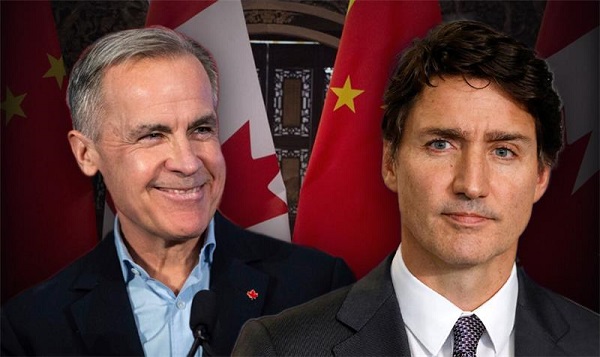
 2025 Federal Election2 days ago
2025 Federal Election2 days agoCSIS Warned Beijing Would Brand Conservatives as Trumpian. Now Carney’s Campaign Is Doing It.
-
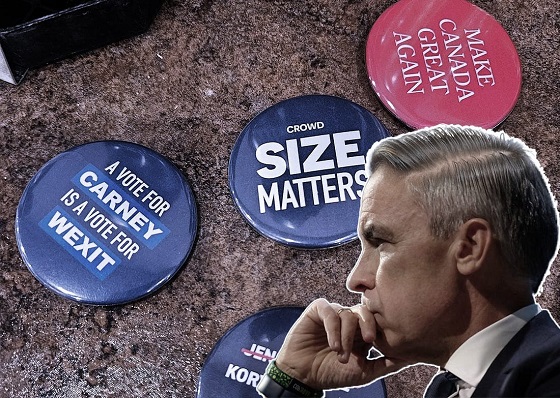
 2025 Federal Election2 days ago
2025 Federal Election2 days agoInside Buttongate: How the Liberal Swamp Tried to Smear the Conservative Movement — and Got Exposed
-

 Bruce Dowbiggin1 day ago
Bruce Dowbiggin1 day agoIs HNIC Ready For The Winnipeg Jets To Be Canada’s Heroes?
-
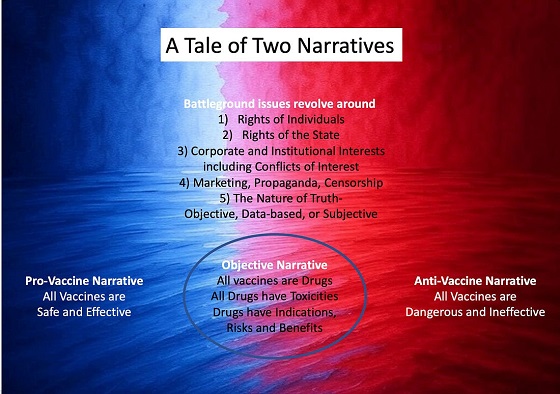
 Dr. Robert Malone1 day ago
Dr. Robert Malone1 day agoThe West Texas Measles Outbreak as a Societal and Political Mirror
-
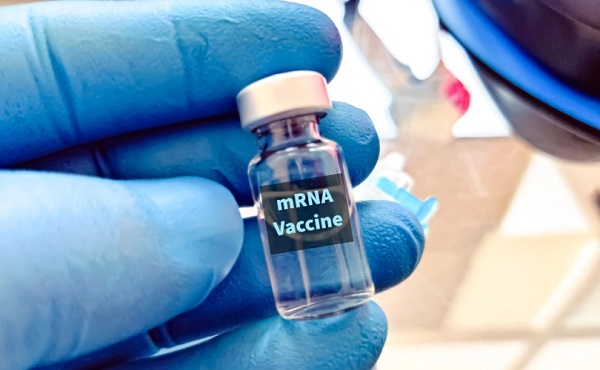
 COVID-191 day ago
COVID-191 day agoCOVID virus, vaccines are driving explosion in cancer, billionaire scientist tells Tucker Carlson
-

 Health1 day ago
Health1 day agoHorrific and Deadly Effects of Antidepressants
-
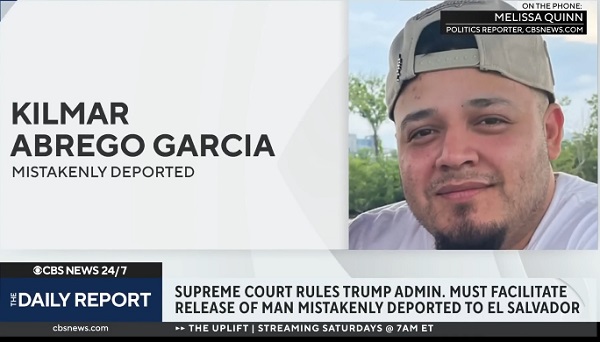
 illegal immigration1 day ago
illegal immigration1 day agoDespite court rulings, the Trump Administration shows no interest in helping Abrego Garcia return to the U.S.





